The first second of a strombolian eruption
The first second of a strombolian eruption: A case study at Mt. Erebus, Antractica
This project is aimed at a better understanding of processes during the first second of a volcanic eruption. To investigate these processes, a portable system of three Doppler Radar instruments was temporarily installed on the crater rim of the active Mt. Erebus volcano in Antarctica (Fig. 1) in late 2005 and, in a slightly modified setup, in late 2007.
Even though many volcanoes of the Strombolian eruption type exist on our planet, only about three of these volcanoes allow the direct observation of their eruption processes from a safe distance on the crater rim. And since all of them are in very remote areas, not much is known about these processes up to the present day. Of these three volcanoes, even though being located in Antarctica, Mt. Erebus is logistically the most practical to work on.
The system of Doppler radars was developed at GEOMAR in Kiel and at the Institute of Geophysics of Hamburg University starting in the late 90 of the last century and is continuously improved through this and several other projects. It allows the close observation of processes during volcanic eruptions from a safe distance. The system, which was installed on the crater rim of Erebus volcano (see Figure on side), observed eruptions from the active molten lava lake (see Figure on the side) inside the crater and measured the speed of ejected material up to 15 times per second. The resulting data show a distribution of velocities of the exploding material, which is driven by the rapid expansion of a large gas bubble rising in the liquid volcanic magma conduit. The analysis of the data allows to calculate accelerations of the exploding gas bubbles, their gas pressures and their size. For some eruptions, gas pressures of several atmospheres were measured, accelerating explosion fragments to velocities above 650 km/h.
Understanding the mechanism of volcanic eruptions and the processes that lead to them helps the general understanding of the mechanics inside a volcano. This is not only applicable in Antarctica, but also at many other volcanoes in Europe or elsewhere on Earth. Such knowledge is a vital part of the necessary foundation for a better forecasting ability, thus protecting society from potential damage through volcanic eruptions.
Field work in Antarctica is a challenge for itself. Volcanologists work on the almost 4000 m high volcano at temperatures down to -45°C and sleep in tents for up to six weeks, sometimes enduring storms and bad weather. Nevertheless, professional support from the US Antarctic program with helicopters and state-of-the-art equipment ensure a safe return home after the expedition.
Further information, related publications, and images from field expeditions can also be found at http://www.planet3.de
Funding: DFG 2005-2008, NSF, US Antarctic program
Contact: Alexander Gerst, Matthias Hort
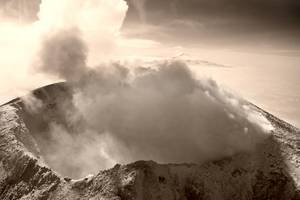
- View of the crater of Mt. Erebus.
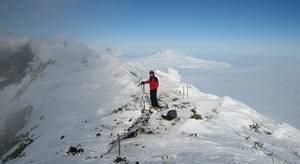
- Setup of the radar at the crater rim.
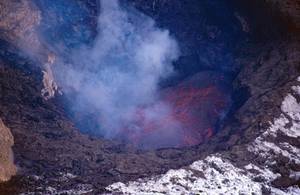
- View into he crater onto the active lava lake.
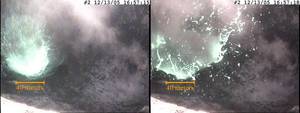
- False color figure of an explosion of a bubble.
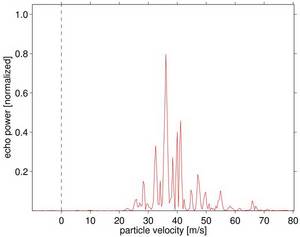
- Recorded velocities during a bubble explosion (all Photos by A. Gerst)
